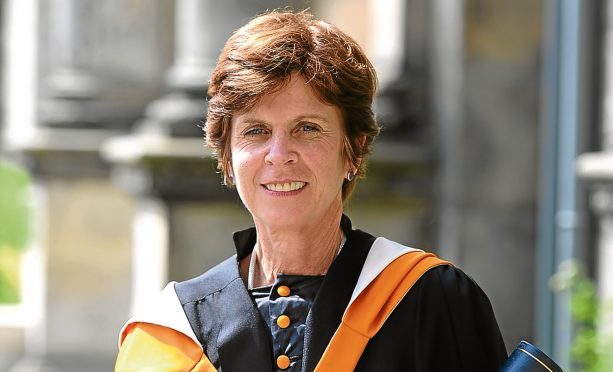Scotland’s renowned universities have had to jealousy guard their independence under the SNP, which though surely proud of such national institutions does not quite get their relatively autonomous – in educational terms – status.
During the 2014 referendum campaign, Alex Salmond grew very cross indeed with university vice-chancellors who dared to differ ideologically from his separatist viewpoint. In fact, very few did, publicly at least, and Unionists were dismayed by the lack of a robust constitutional argument emanating from ivory towers north of the border.
The notable exception was Professor Louise Richardson, then the principal of St Andrews, now vice-chancellor of Oxford University.
Professor Richardson had expressed anti-separatist sentiments, saying if St Andrews was cut off from national research councils in the event of secession it would be “catastrophic” – they would lose their top academics and find it difficult to attract others.
A fair enough comment in the troubling circumstances of three years ago but Mr Salmond – himself a graduate of the university – contacted Professor Richardson and urged her to issue an SNP-scripted statement.
Professor Richardson was ordered to praise the Scottish Government for having “risen to the challenge” over tuition fees, and express confidence that it could protect funding after independence, while criticising Westminster. Professor Richardson, an Irish-American unaccustomed to the bullying tactics of the Nationalists, was naturally outraged and refused to kowtow.
Mr Salmond, though now outside politics, having lost his Commons seat in the general election, has been at it again in the past week. This time he hit out at his alma mater for being elitist.
St Andrews, he said, unlike Glasgow University, fails Scotland for not educating youngsters from “across the social spectrum”.
He proposed that Scottish universities should admit poor children on the basis of assessment, possibly made during a summer school, rather than on their exam results.
His remarks were dismissed as “mostly blethers” by St Andrews but he is not alone in trying to socially engineer higher education intakes to make up for failures in the school system. Labour MP David Lammy recently laid into both Oxford and Cambridge for the low ratio of black students admitted. This is, of course, a matter that should concern politicians and educationalists but in England, as in Scotland, the problem of access must be dealt with at school, not university, level.
Downgrading our most esteemed seats of learning, wherever they are in the UK, by lowering their admission standards is not the answer to education inequalities.
Alarming
Interference in how universities run their affairs is more worrying in Scotland, though, because the state refuses to charge tuition fees.
The results of this short-sighted policy are clear; fewer youngsters from disadvantaged backgrounds apply to university here than in the south, where fees of up to £9,000 a year can be charged, in a loans system.
Graduates elsewhere in the UK pay back their debts only when they are earning sufficient means, and there is money to support bursaries for poorer kids. But a more sinister consequence of Scottish universities’ over reliance on government funding is government’s belief that it somehow owns these organisations.
That is the only conclusion to be drawn from the alarming warning from the SNP’s Shirley-Anne Sommerville, promoted well beyond her talents to the Higher Education portfolio. This week she threatened universities with fines unless they aligned their work more closely with Scottish Government economic priorities and “policy ambitions”, which include recruiting more underprivileged pupils.
She wrote to the Scottish Funding Council with new guidance over what universities must do in return for the resources they get – around £1.7 billion a year. If they do not comply satisfactorily with “outcome agreements” (what institutions must do in return for public money), she suggested the imposition of “clawback arrangements”.
While clawbacks are apparently legal, they are usually only deployed when universities exceed their quotas for Scottish (that is, free) students.
Manipulated
Labour’s education spokesman, Iain Gray, described Shirley-Anne Sommerville’s move to exert influence in this way as “chilling”. If anything, that is an understatement. Universities exist to further the sum of human knowledge, as well as to educate and enlighten subsequent generations, and can fulfil neither objective if they have to adhere to a political agenda.
A society that tries to control its thinkers and dictate their programmes of research is typically a dictatorship, not a liberal democracy. It is not surprising that Shirley-Anne Somerville has learnt little of the lessons of history, and how the path to totalitarianism often begins with the suppression of intellectual freedoms.
The SNP, after a decade in power in Scotland, seems to have forgotten that academia is not another tier of government, to be manipulated to ministerial will. There is no justification for this latest attack on our universities and it is to be hoped that they collectively stand up for themselves on this occasion, and for Scotland’s future students.










